Throughout history, technology has been a fundamental element in the evolution of the arts. From printing techniques and analog cameras all the way to television and the internet, creatives have always responded and adopted the technologies of their time. Now, living at the peak of digital culture, in the midst of a climate crisis and a post-pandemic reality, a new generation of artists and designers are exploring the meaning and importance of technology today.
Going beyond its technical and practical use, and understanding its traditional role in the context of production chains and broadcasting, artists are now focusing on technology’s social and political implications. Through exploring its connections with millenary techniques, philosophy, and nature, technology is recontextualized and becomes a tool to fight the pressures of individualism and capitalism.
FF spoke with creatives working across ceramics, moving image, performance, and ecology about how technology is reshaping the future of the arts.
Cindy Valdez
Cindy Valdez is the co-founder of Migration of Matter, a Berlin-based studio that, by merging the ancient craft of ceramics with custom-designed 3D printers, creates organic yet evocative patterns that show the possible harmony between the plant world and machines. Cindy’s inspiration stems from childhood memories in Peru. Growing up in the “mud house” of her grandparents shaped her appreciation of organic materials, while spending time in his father’s motorcycle repair shop after school taught her the beauty and sense of freedom machines could offer. This freedom and curiosity encouraged Cindy and her partner Nicholas to build their first ceramic printer and explore new possibilities of clay through technology.
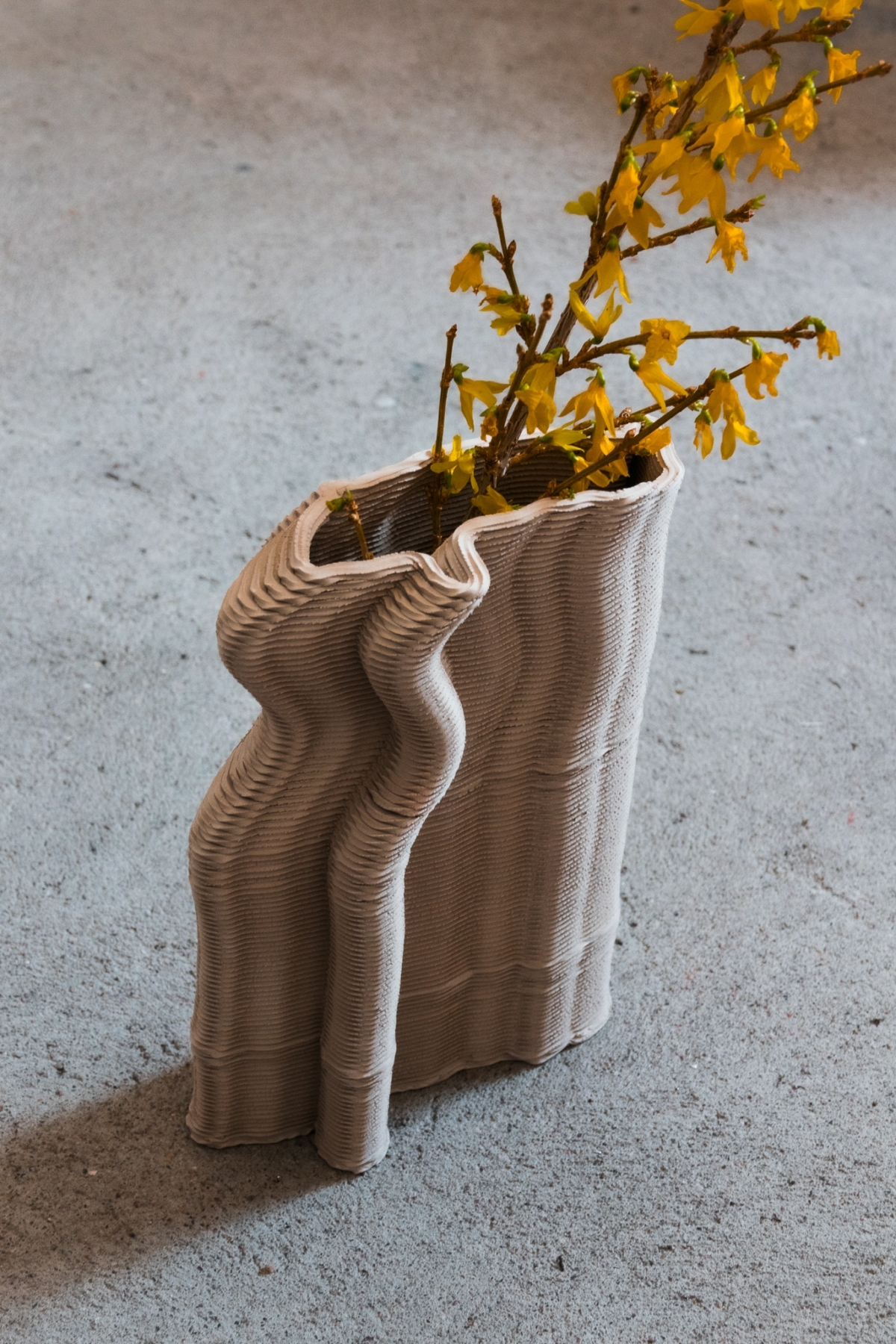
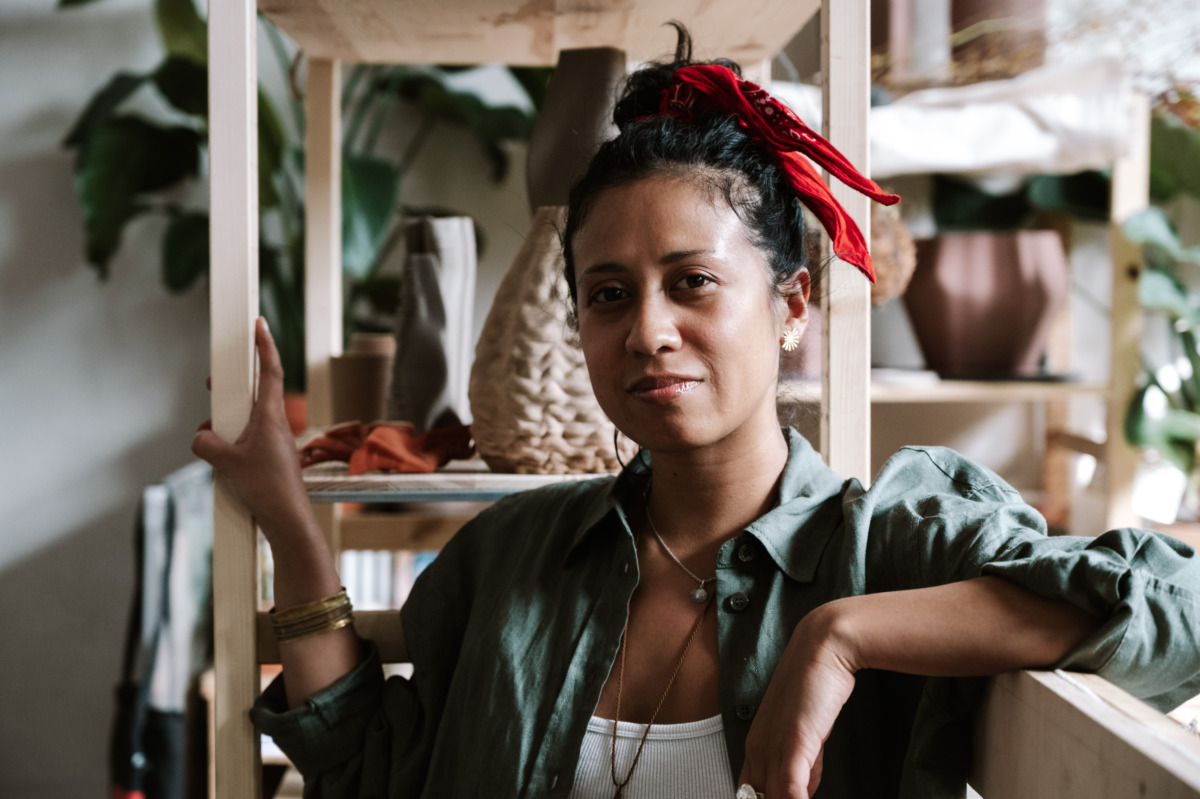
-
Based on your experiences and knowledge about digital technologies, how do you imagine the future of design?
I imagine the future of design and art, open to everyone equally. I come from a very humble neighborhood in Lima, and I never imagined that I could learn and be passionate about technology. If it hadn’t been for the opportunity to travel and study in Germany, I don’t think I would have had the chance to try and experiment. From a political point of view, I imagine the future of art open for everyone, for all generations. A future in which everyone, no matter the resources, can have the possibility to experiment. I speak for all the countries in South America, where education, unfortunately, is not the same for everyone. There is a talented and sound generation hungry to learn and create with very different viewpoints than in countries with developed economies. I firmly believe that this can be something that will help to break many barriers and bring new things to the art of creating.
Anna Mikkola
“Perhaps it’s more about the digital informing the analog in my case rather than the other way around,” says London-based artist Anna Mikkola when speaking about her process. Researching how technologies and ecologies shape each other, her work is a combination of moving image, installation, text, and sound. With a background in photography, Anna developed an interest in the transformation images undergo through their circulation in networks. Her practice touches upon ideas of memory, mourning, dreams, and the impact of technology in scientific research while it shows technology’s potential to create realities, fiction, and everything in between.
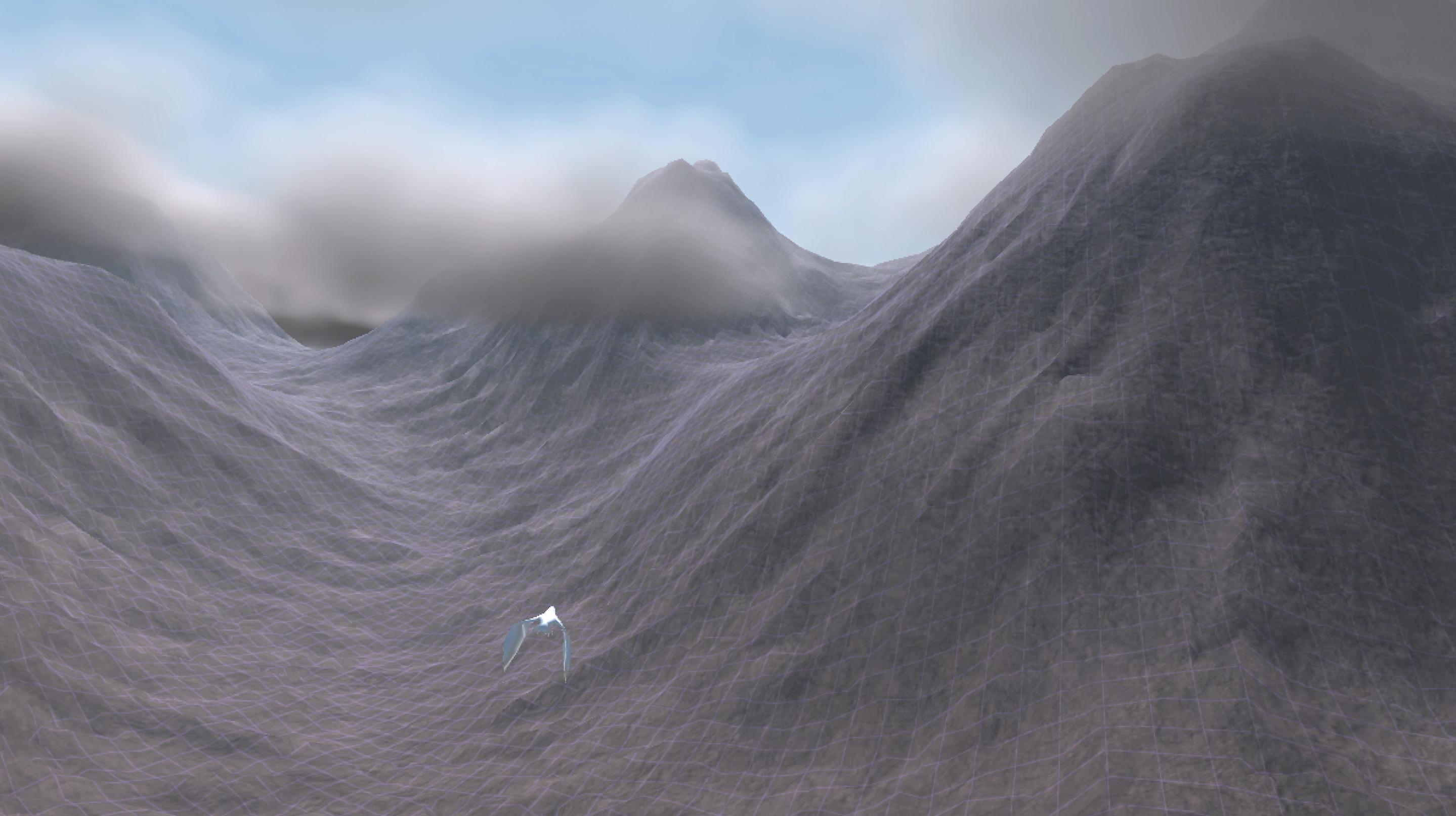
-
Based on your experiences and knowledge about digital technologies and practices, how do you imagine the future of the arts?
I hesitate to make huge predictions because often they get old as soon as you say them out loud. But I hope that new digital technologies will excite different kinds of people to create reflective and critical artwork—both about society and about the technologies themselves. I also hope that digital technologies will be used to make artwork that addresses global and abstract environmental challenges that happen at a large scale, for example, by talking about how interlinked different issues such as environmental change and colonialism are. Technologies as tools that function at a certain level of abstraction can gesture towards different conceptions of time and rhythm, as well as communication and cohabitation between species—hopefully opening up for ideas on alternative ways of living.
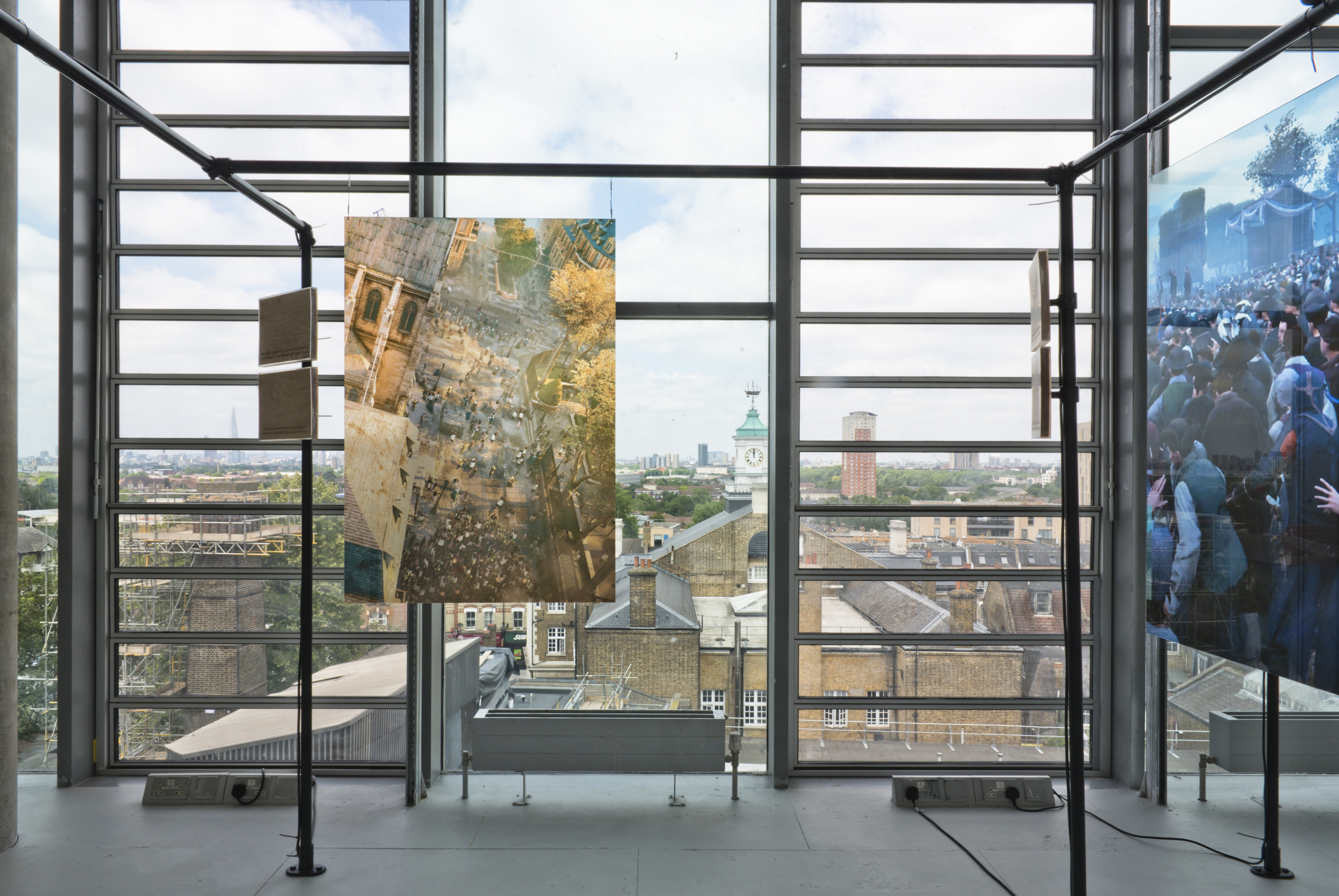
Amandine David
Through collaborations with coders, makers, and craft masters, designer and researcher Amandine David is creating hybrid fabrication methods and redefining what craftsmanship means today. Based in Brussels for ten years now, and with a background in traditional crafts, Amandine’s first approach to integrating technology into her practice was born from questioning the very need to use it in the first place. While researching the history of weaving, she found an opening: the binary language composing weaving patterns was an ancestor of the basics of programming. “In many ways, my practice is about language. I like to explore common grounds to create material dialogues between fields we consider non-related or even opposed at first glance, such as basket weaving and 3D-printing, or hand-weaving and coding.” Amandine’s research and experimentation are also fed by a critical posture toward mass production and overconsumption of goods and have become a re-evaluation of our current relationship with technology.
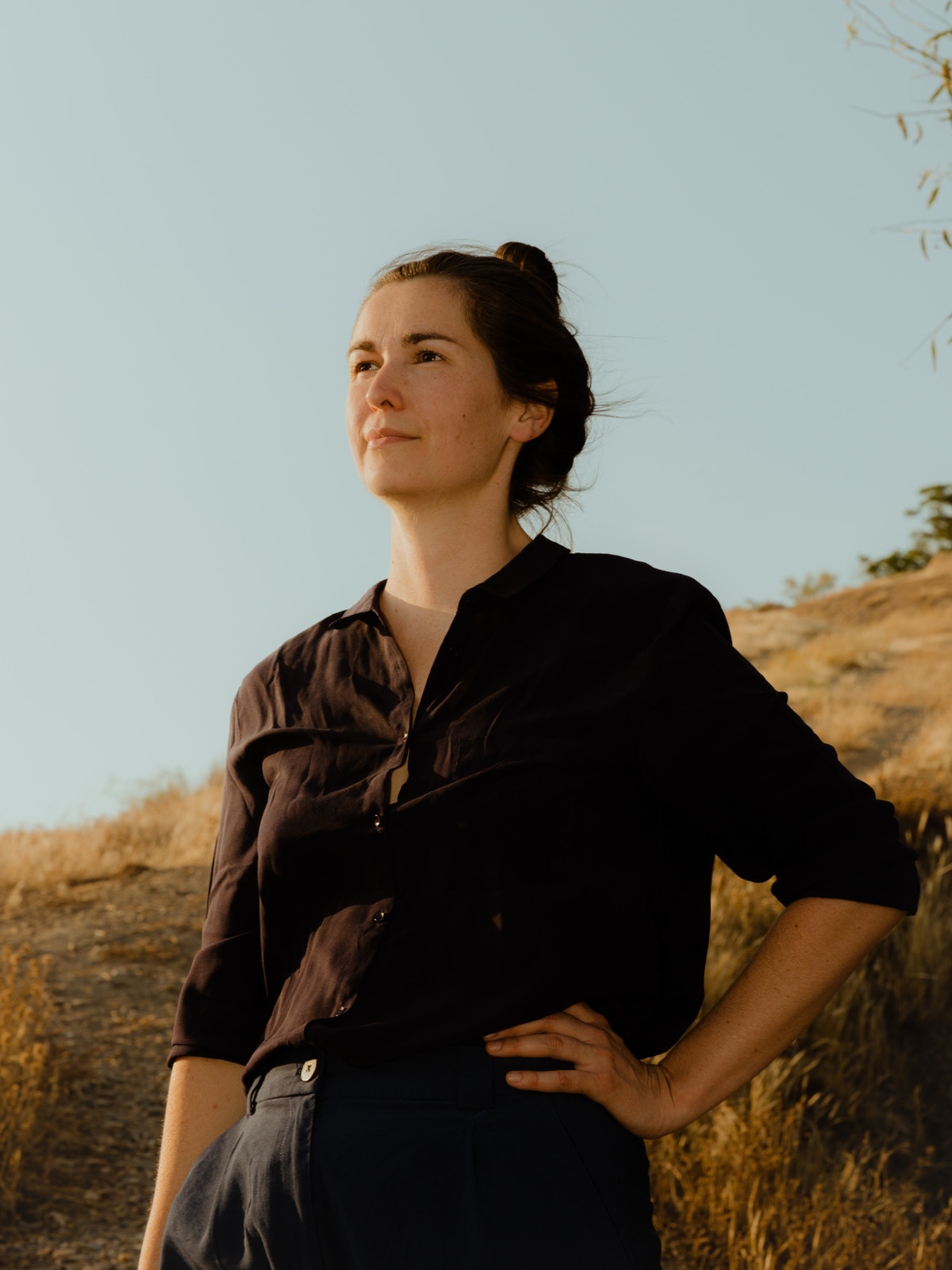
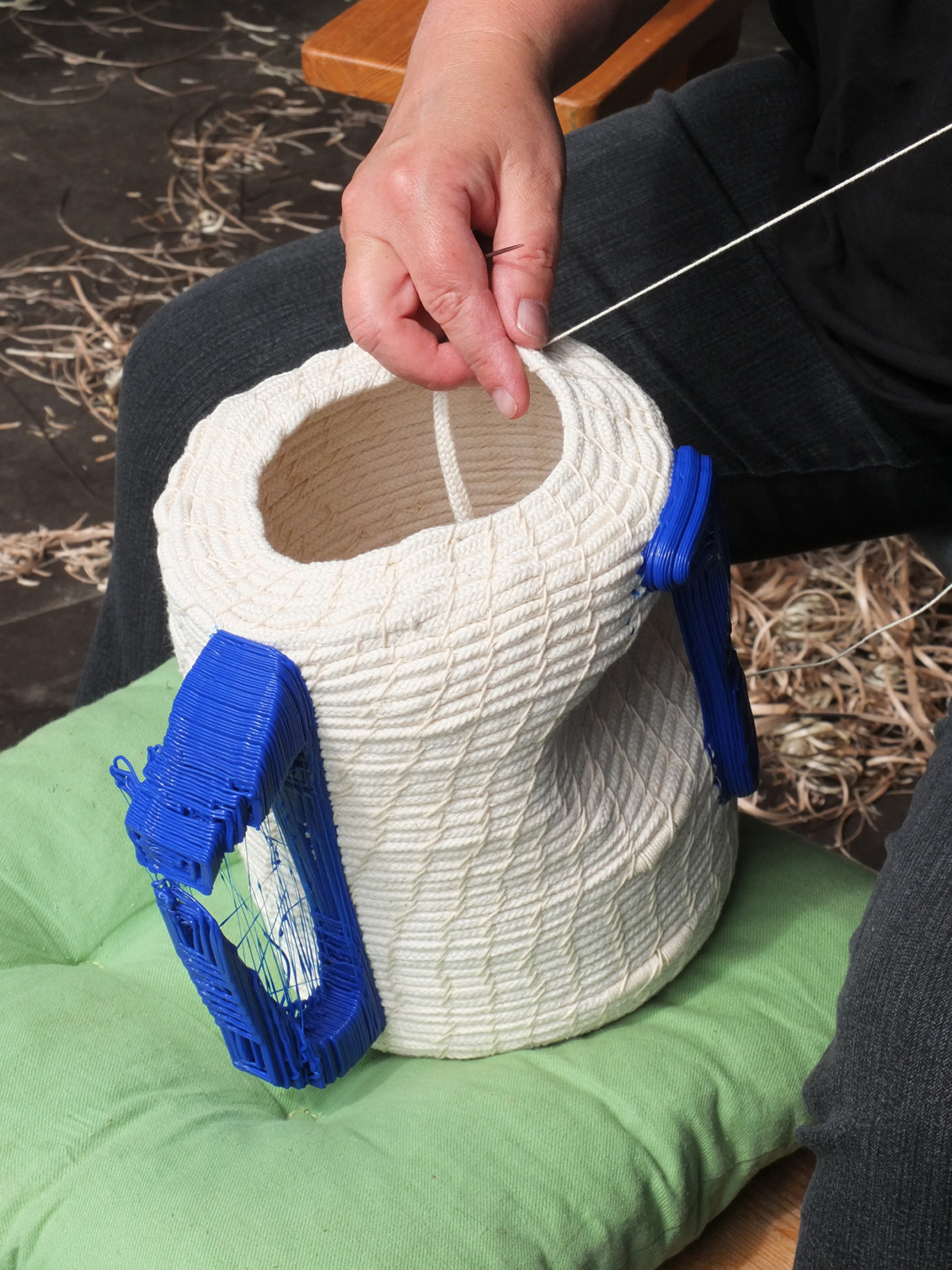
-
With your experiences and knowledge of digital technologies and practices, what does the future of design look like?
It’s hard to know what the future will be like—even five or ten years from now. The ecological crisis we are experiencing results from many acts of violence perpetrated by humankind on nature. Primarily by the West on the rest of the world. Capitalism, colonialism, racism, sexism, etc., are rooted in the exploitation of fragility. I hope for a future where art and design can reshape our idea of fragility to create new relationships with each other and nature. Art and design have the power to invent and share alternative storytelling through the production of objects, images, interactions, gestures, etc. They are necessary for the construction of desirable perspectives.
I imagine a future where we use digital technologies while minding the fragilities to be protected—starting from the human, local materials, and identities. I think of technology’s future as a hybrid, both a language and a political tool.
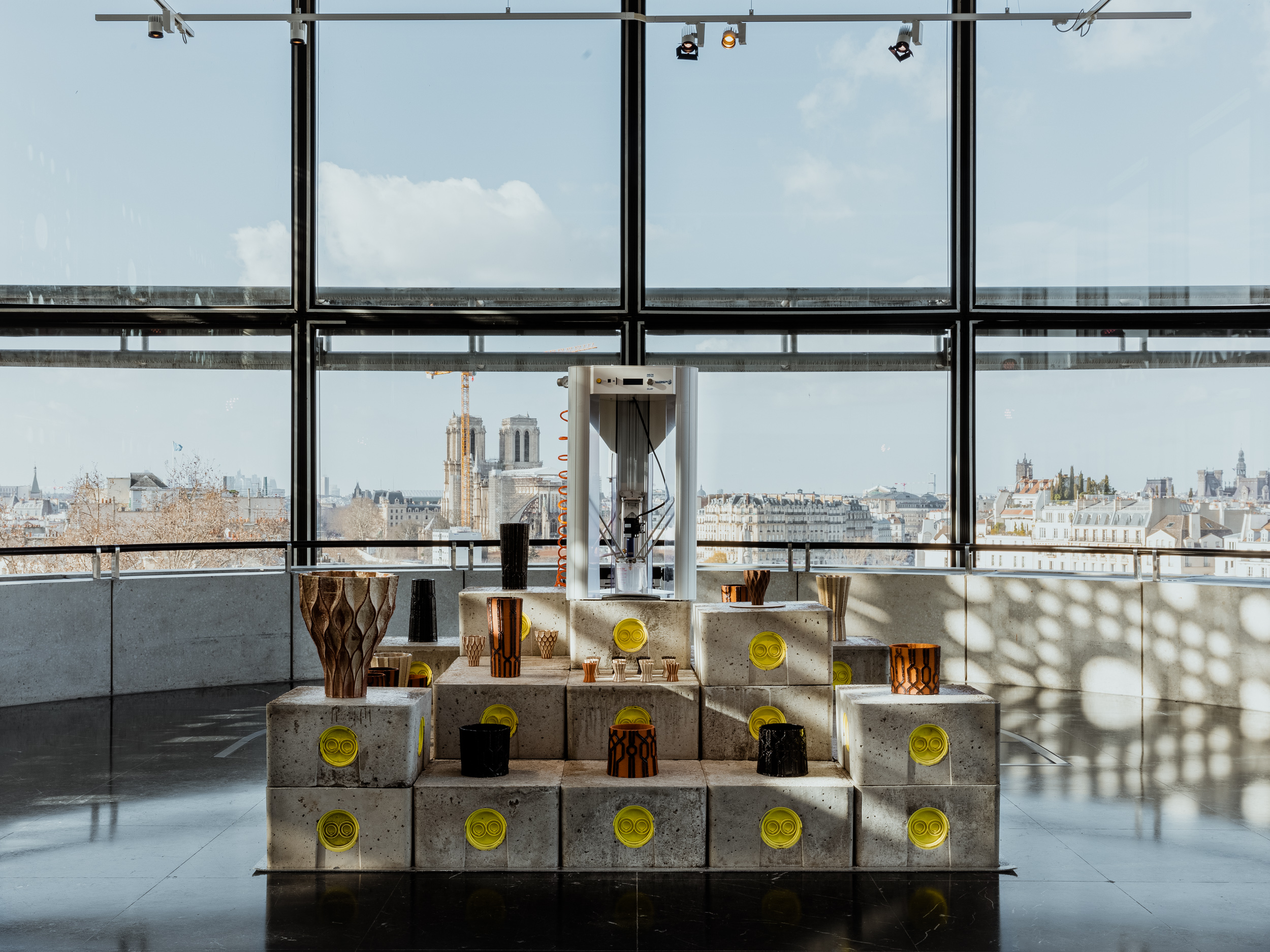
Nicholas Perillo
Frustrated by the lack of innovation in the digital arts, Berlin-based designer and engineer Nicolas Perillo created MORPH. This modular and kinetic interactive installation works with sensors and lighting to create a dialogue between humanity and robotics. Taking inspiration from science fiction, Perillo explores how technology opens up the possibilities to alter realities and create new timelines and unseen experiences. Still, as the best science fiction does, it departs from materiality and nature, building an alternative sense of realness. “I strive to create mesmerizing experiences that captivate and transport the audience into a visceral alternative universe. For a moment, I want them to forget everything and be present only in the cohesive experience.”
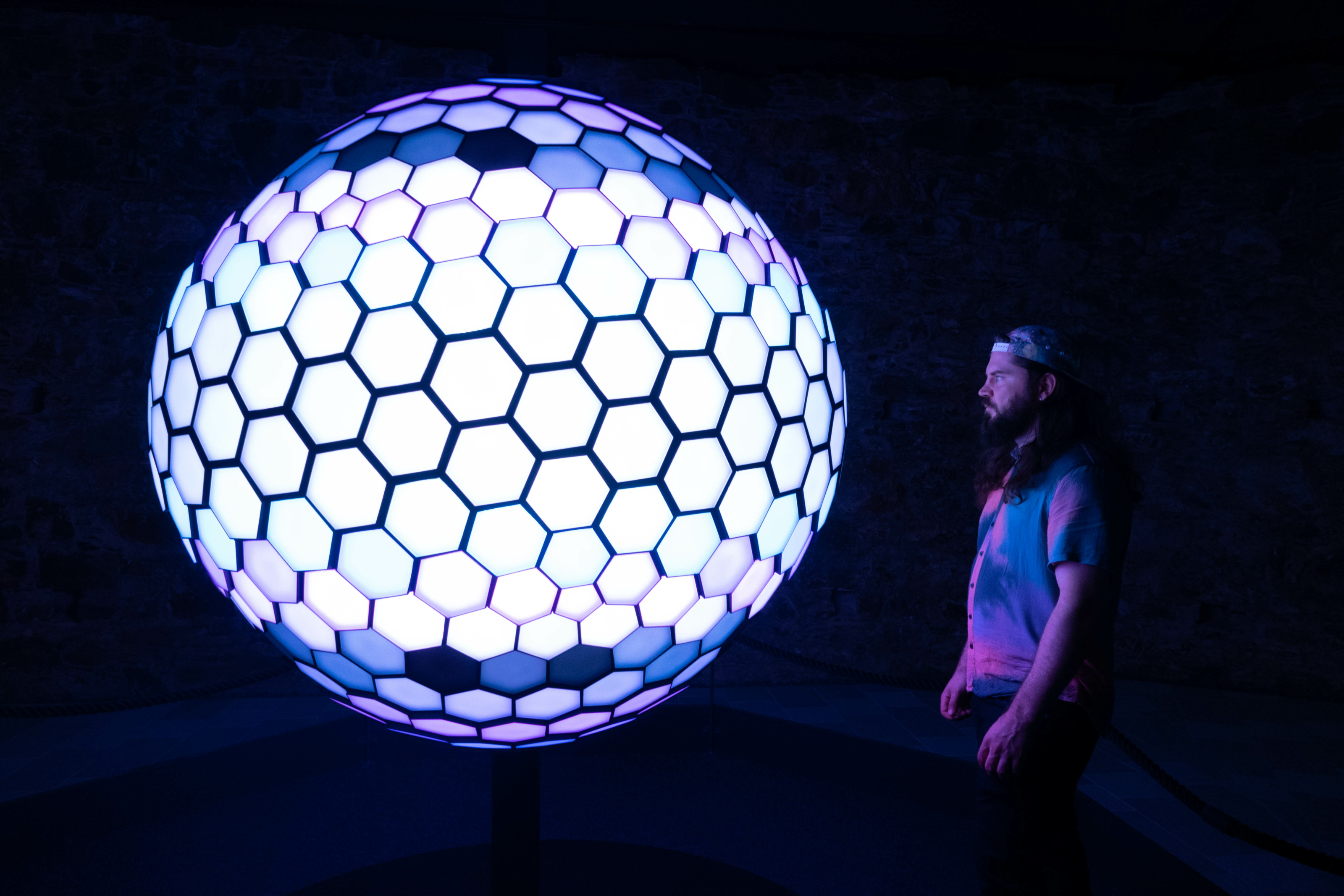
-
Based on your experiences and knowledge about digital technologies and practices, how do you imagine the future of design?
The future of design and art is incredibly exciting. This is because many technologies and the knowledge to apply them have become much more accessible. Almost anyone can use different technologies and practices in ways only their unique perspective on the world allows. We are already at a stage where new media art is everywhere you look and is increasingly well funded. We will see more innovative projects of increasing scale and complexity in the near future. The competition to make the next crazy installation is heating up. You don’t have to look far to find inspiration from grassroots all the way to the established players. Personally, I would like to shape this future by pushing for higher-quality experiences that aren’t just collections of existing technologies rearranged that you can breeze past without a thought. Instead, I want to push for a standard that makes the technology invisible and leaves no room for distraction from the adventure.
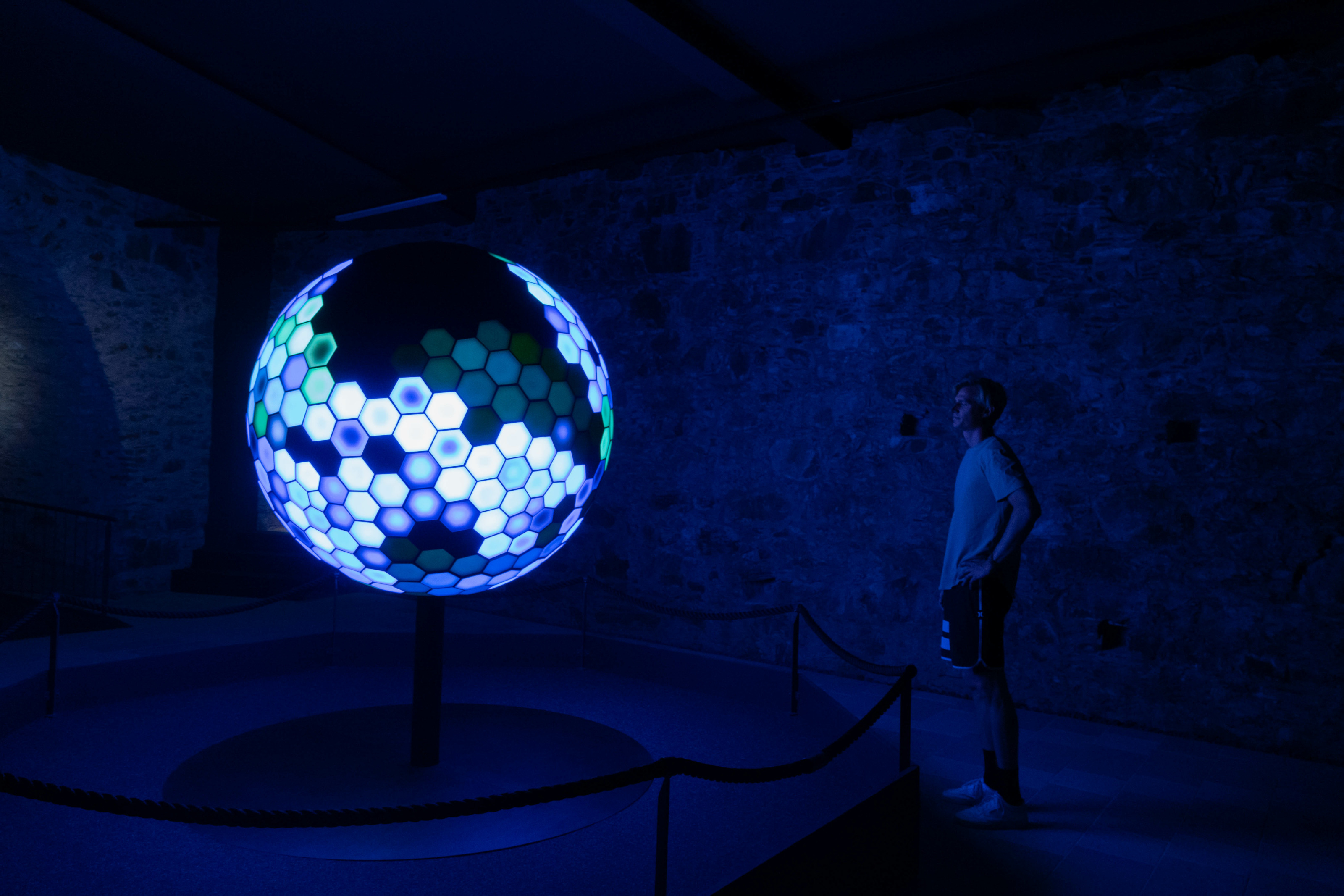
Belén Romero Gunset
Argentinian artist Belén Romero Gunset is developing her own philosophical systems through performance art and NFTs. Being forced to work from home during the pandemic, Belén found herself questioning the relationship with her computer, which led to studying code, machine learning, and blockchain. “I did a series of video performances called Dear Machine, where I taught my computer my philosophical system, a kind of DIY machine learning. With the aim of creating an AI capable of doing philosophy itself.” Working from a queer perspective, Belén uses technology and performances as extensions of herself and approaches her artistic practice as a tool to question technology in order to transform it.


-
Based on your experiences and knowledge about digital technologies and practices, how do you imagine the future of art?
Artists participate in shaping the future not only as creators but also as thinkers. Artistic practice can create new ideas with, and through, the old categories of things, such as technology, art, and philosophy. Artists have a structural position in the design of the future. In the development of metaverses, artists and designers are also structural.
This feature is part of New Futures, a series of articles, interviews, and visual essays exploring the future of creativity. The main image of this piece is Belén Romero Gunset’s performance “Semejanzas Inadmisibles” at the Universidad Di Tella in Buenos Aires, Argentina.
If you are interested in reading more about the junctions between arts and technology, don’t miss the story of how Sarah Newman explores technology as a tool to learn what it means to be human.
Text: Maria Paris Borda
Images courtesy of: Cindy Valdez, Anna Mikkola, Amandine David, Nicolas Perillo, and Belén Romero

